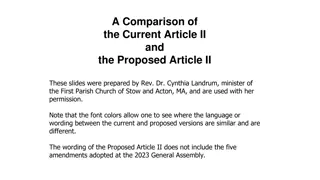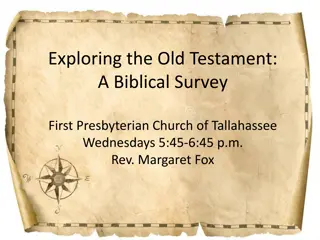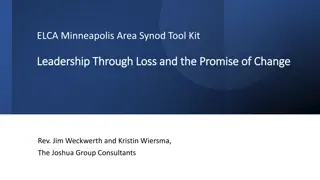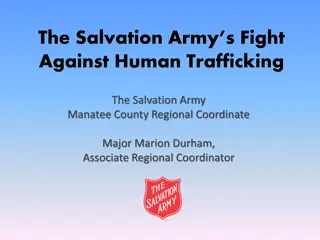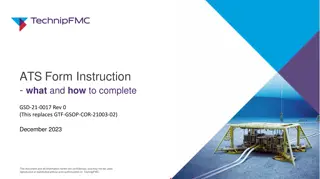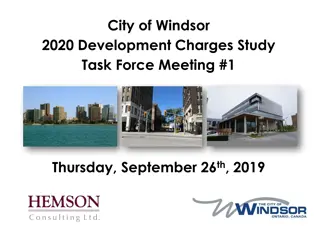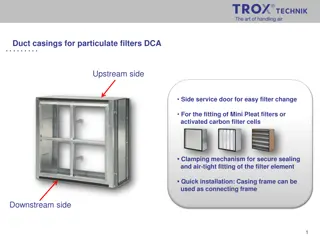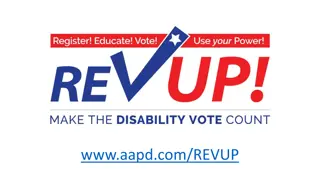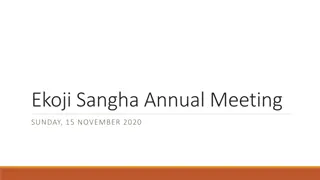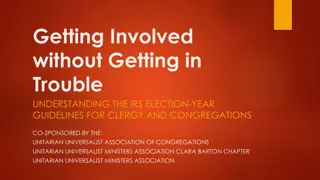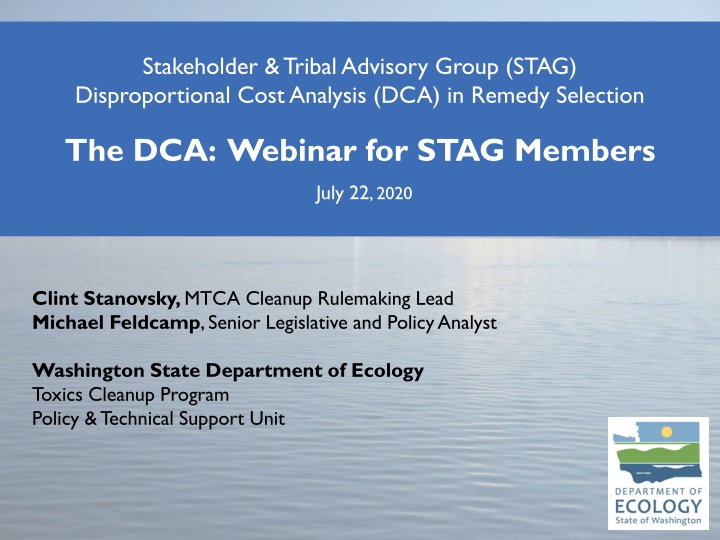
Disproportional Cost Analysis (DCA) in Remedy Selection Webinar Summary
Learn about Disproportional Cost Analysis (DCA) in Remedy Selection from the webinar held for Stakeholder & Tribal Advisory Group (STAG) members on July 22, 2020. Understand the difference between DCA and simple Cost-Benefit Analysis, the need for conducting DCA, and steps involved in the process. Discover how DCA seeks the most permanent and cost-effective solution, considering both quantitative and qualitative estimates of costs and benefits. Gain insights into ranking alternatives by permanence and the criteria for estimating costs and benefits in highly impacted communities.
Download Presentation

Please find below an Image/Link to download the presentation.
The content on the website is provided AS IS for your information and personal use only. It may not be sold, licensed, or shared on other websites without obtaining consent from the author. If you encounter any issues during the download, it is possible that the publisher has removed the file from their server.
You are allowed to download the files provided on this website for personal or commercial use, subject to the condition that they are used lawfully. All files are the property of their respective owners.
The content on the website is provided AS IS for your information and personal use only. It may not be sold, licensed, or shared on other websites without obtaining consent from the author.
E N D
Presentation Transcript
Stakeholder & Tribal Advisory Group (STAG) Disproportional Cost Analysis (DCA) in Remedy Selection The DCA: Webinar for STAG Members July 22, 2020 Clint Stanovsky, MTCA Cleanup Rulemaking Lead Michael Feldcamp, Senior Legislative and Policy Analyst Washington State Department of Ecology Toxics Cleanup Program Policy & Technical Support Unit
Preliminary Rule Update the Remedy Selection Process July 22, 2020 Cleanup Rule Update: DCA Webinar for STAG Members 2
Why do I need to conduct a DCA? July 22, 2020 Cleanup Rule Update: DCA Webinar for STAG Members 3
How does DCA differ from a simple Cost-Benefit Analysis? DCA doesn t simply seek the most cost- effective solution. Instead, DCA seeks the most permanent solution that is cost effective (maximum feasible permanence). DCA proceeds by repeating pairwise comparisons of more-permanent with less-permanent alternatives, Rejecting more-permanent alternatives for which incremental costs are greater than incremental benefits. Stopping after identifying the first feasible more-permanent alternative. July 22, 2020 Cleanup Rule Update: DCA Webinar for STAG Members 4
How does DCA differ from a simple Cost-Benefit Analysis? Benefits and costs cannot all be quantified and compared directly using the same units. (Cost $ / Benefit $) < 1 doesn t work. Instead, for each pair of alternatives, we must compare: Differences in quantified estimates of costs, with Differences in qualitative estimates of degree of benefits. Qualitative estimates rely on best professional judgement. These must be: Reasoned, consistent, and clearly documented. July 22, 2020 Cleanup Rule Update: DCA Webinar for STAG Members 5
How do I conduct a DCA? Step 1: Estimate costs and benefits of each alternative. Use seven specified criteria to estimate. Estimates may be quantitative, but will often be qualitative and require the use of best professional judgment. Qualitative benefits may be weighted. Estimates must reflect benefits and burdens on highly impacted communities. Reference: WAC 173-340-360(5)(c)(i) and (3)(d) in preliminary draft. July 22, 2020 Cleanup Rule Update: DCA Webinar for STAG Members 6
How do I conduct a DCA? Step 2: Rank alternatives by degree of permanence. Determine whether alternative is permanent based on definition in WAC 173-340-200. Determine relative degree of permanence based on criteria in WAC 173-340- 360(5)(d)(ii). Reference: WAC 173-340-360(5)(c)(ii) in preliminary draft. July 22, 2020 Cleanup Rule Update: DCA Webinar for STAG Members 7
How do I conduct a DCA? Step 3: Identify the initial baseline alternative for the DCA. If only 1 permanent alternative remains, use that alternative. If more than 1 permanent alternative remains, use most practicable alternative. If no permanent alternative remains, use alternative with the highest degree of permanence. Reference: WAC 173-340-360(5)(c)(iii) in preliminary draft. July 22, 2020 Cleanup Rule Update: DCA Webinar for STAG Members 8
How do I conduct a DCA? Step 4: Conduct a DCA of the ranked list of alternatives. Compare costs and benefits of baseline alternative with next most permanent alternative. Determine whether incremental cost substantially exceeds incremental degree of benefit. If no, stop DCA. The baseline alternative is permanent to the maximum extent practicable. If yes, eliminate baseline alternative and continue DCA using next most permanent alternative as baseline. Reference: WAC 173-340-360(5)(c)(iv) in preliminary draft. July 22, 2020 Cleanup Rule Update: DCA Webinar for STAG Members 9
Questions or comments? July 22, 2020 Cleanup Rule Update: DCA Webinar for STAG Members 10
For more information 1. Visit Ecology s web page: https://ecology.wa.gov 2. Search for Chapter 173-340 WAC and select the link 3. From the Chapter 173-340 WAC rulemaking web page, follow links to: Subscribe to e-mail notifications http://listserv.ecology.wa.gov/scripts/wa-ECOLOGY.exe?SUBED1=MTCA- SMS-RULE-UPDATE&A=1 Stakeholder and Tribal Advisory Group web page https://www.ezview.wa.gov/site/alias__1988/37514/default.aspx July 22, 2020 Cleanup Rule Update: DCA Webinar for STAG Members 11
Thanks! Thanks! Clint Stanovsky MS, MPA Regulatory Analyst | Policy and Technical Support Unit Toxics Cleanup Program Washington Department of Ecology clinton.stanovsky@ecy.wa.gov office: (360) 407-7193 cell: (360) 742-9703
Extra slides for Q & A July 22, 2020 Cleanup Rule Update: DCA Webinar for STAG Members 13
Do I need to consider environmental justice in the DCA? YES EJ must be considered when evaluating whether an alternative meets cleanup action requirements. This includes when conducting a DCA to determine which cleanup action alternative is permanent to maximum extent practicable. Reference: WAC 173-340-360(3)(d) in preliminary draft. July 22, 2020 Cleanup Rule Update: DCA Webinar for STAG Members 14
How do I consider environmental justice in the DCA? When estimating the benefits and costs of an alternative, identify and document: How the alternative may benefit a highly impacted community by eliminating or mitigating the impacts of the site, and the degree to which benefits are equitably distributed. How the alternative may burden a highly impacted community during the cleanup process, and the degree to which burdens are equitably distributed. This may include consideration of cumulative impacts. Reference: WAC 173-340-360(3)(d) in preliminary draft. July 22, 2020 Cleanup Rule Update: DCA Webinar for STAG Members 15


